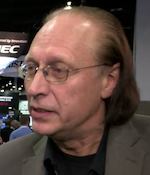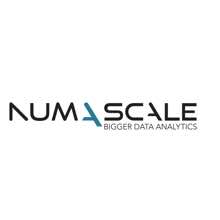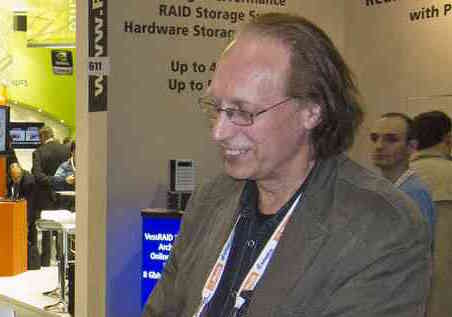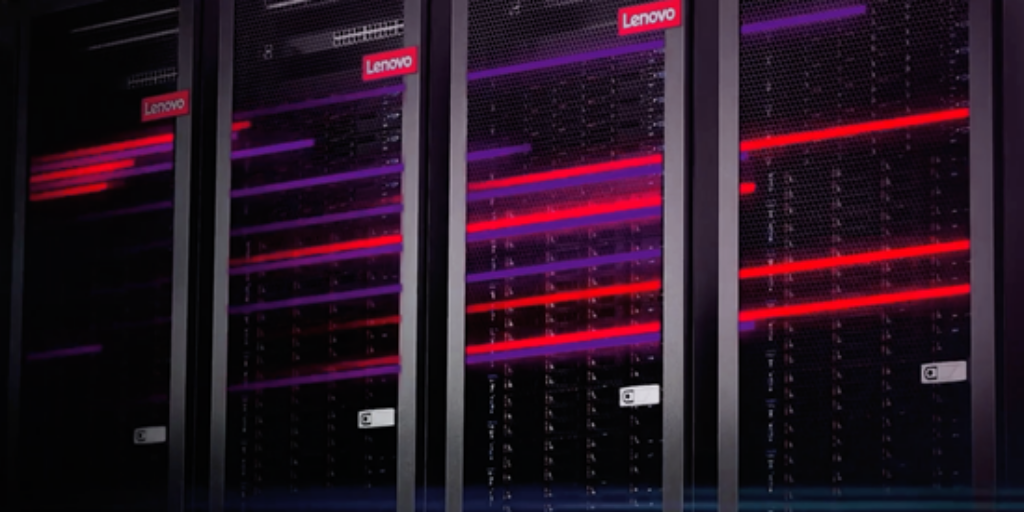Hailing from Norway, big-memory appliance maker Numascale has been a fixture at the ISC conference since the company’s formation in 2008. At ISC 2016, Numascale was noticeably absent from the show and the word on the street was that the company was retooling their NumaConnect™ technology around NVMe. To learn more, we caught up with Einar Rustad, Numascale’s CTO.
insideHPC: We missed you at ISC this year in Frankfurt. What’s happening with Numascale?

Einer Rustad, CTO, Numascale
Einar Rustad: Yes, we’ve changed our business model and our way of operating a bit. As a technical company, we are small, and it’s very hard to do everything on our own — all the hardware to software. So, we kind of stepped back and said, “Okay, we better take our NumaConnect technology the OEM route and collaborate with some partners to deliver solutions for customers.”
So, that’s what we’re doing now. And we’ve already gotten a very healthy response from several big system vendors who want to build scale-up systems based on Intel’s next-generation Purley and Tinsley platforms. So, we’re underway doing that. We already have one fairly big customer signed up for this and we’re talking to several others – so, we live in interesting times, definitely.
insideHPC: The competitive landscape in HPC and Big Data analytics continues to evolve. Hewlett Packard Enterprise is acquiring SGI and their UV big memory server technology. At the same time, Intel has brought Xeon processors to market that support very large memory systems. Has this created some opportunity for you?
Einar Rustad: Yes, things are changing. I think both HPE and Dell were selling rebranded SGI UV solutions. So that has to change. Also, will HPE continue with their own node controller for their Superdome machines or will they use the SGI stuff? No one knows for sure.
insideHPC: In this new model, does Numascale become a hardware technology provider to other vendors then? Is that the business direction?
Einar Rustad: Yeah, that’s a major thing that we’re doing. We also have some software projects on the side, including some independent stuff that will run on any system, so that’s basically a self-funded thing. We also just got granted a fairly big, European project, together with a number of partners, that will start rolling next year.
insideHPC: In your estimation, has Numascale become the de facto alternative for vendors that want to compete with HPE on big memory analytics?
 Einar Rustad: Of course, HPE will now own the customer base of SGI. They have some very loyal customers in the three letter agencies, and combined with their Superdome customers, HPE now covers a fair share of the scale-up market. But there’s now only one alternative technology on the market offering that kind of big memory technology – and that would be us in this case.
Einar Rustad: Of course, HPE will now own the customer base of SGI. They have some very loyal customers in the three letter agencies, and combined with their Superdome customers, HPE now covers a fair share of the scale-up market. But there’s now only one alternative technology on the market offering that kind of big memory technology – and that would be us in this case.
insideHPC: So, it seems like the processors are more or less standardized on Intel, so where is the differentiation?
Einar Rustad: So yes, a lot of the vendor use Intel processors in their systems; okay, so they might be able to use the same type of chip-sets for interconnecting those processors. They used to do that as well on the motherboard level, for Broadcom or Intel chip-sets, or what have you. But the node controller has always been sort of the secret sauce of their value add, for larger systems and it’s a very complex thing to do. Of course they have experience, but it takes quite a bit of time to do it, and if they’re not focusing on that entirely then it might be a costly endeavor.
So, I think our architecture is very well suited for differentiation also, because the micro-architecture is programmable by firmware, so you can do some custom optimizations, and you can do some little things that could make huge difference in some use cases, if you want to do that.
insideHPC: So, where would Numascale technology come into play? It seems like the Intel machines get bigger all the time, with more memory DIMM slots and more sockets, and now they’ve got Scalable System Framework. Is Numascale for customers that want a scalable SMP beyond eight sockets?
Einar Rustad: I think the sweet spot where you need to do a node controller is probably eight sockets and above. It might be that eight sockets can be performing, but not necessarily as good as with a node controller. Because you get more parallelism and less interference between the machines, or the sockets, according to transactions, and so on.
Of course, you can go lower, but at four sockets it won’t make any sense. But above eight sockets it is a necessity, there is no other way.
insideHPC: So how high can you scale in terms of cores?
Einar Rustad: I think the practical limit, for some time at least, will be in the thousand-core range. The practical limits of this comes down to the operating system. We have booted a five-thousand-core system, but of course we had a few interesting things that we had to fix in the operating system kernel, to get that running smoothly. But that is developing also, so eventually I think we can do even bigger systems.
insideHPC: Does Numascale technology play well with these multiple levels of memory hierarchies that people are talking about?
Einar Rustad: Yes, I think so, even if you get denser memories, there’s only so much memory a single processor can handle efficiently, of course application dependent, again. But think about it, if you want to sift through a terabyte of data, it’s something you—if you should do it with a single processor, it really takes a while. So, for practical purposes, at least we hear from the likes of SAP Hana users, those guys, they don’t only need a lot of memory, they also need a lot of cores.
insideHPC: There’s a lot of talk about ARM for HPC lately. Would that architecture lend itself to big memory solutions based on Numascale?
Einar Rustad: Potentially, yes. Our basic technology is processor-agnostic and there is a coherency protocol defined for ARM that can be used. So, there are several options if customers or system vendors are interested in pursuing that kind of market with ARM or power-type processors, that can be done as well.
insideHPC: So what’s on your docket in the immediate future?
Einar Rustad: Lots of vendor meetings. In fact, I’m headed to China for the third time this year. Like I said– we live in interesting times!




